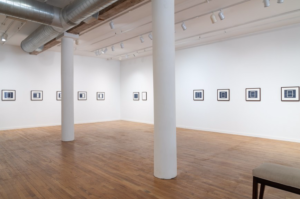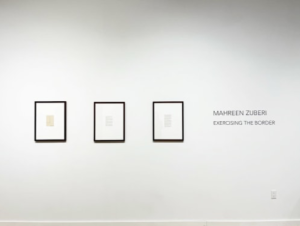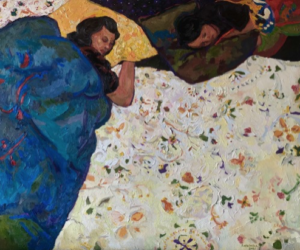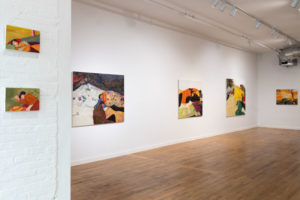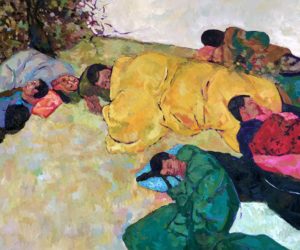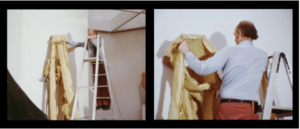Installation view of Mahreen Zuberi: Exercising the Border
Photo by Jon-Paul Rodriguez
Anita Rogers Gallery is pleased to present Exercising the Border, a solo exhibition of new works on paper by Pakistani artist Mahreen Zuberi. The exhibition will be on view from February 1 through March 11, 2023 at 494 Greenwich Street, GFL, New York, NY 10013.
Zuberi was born in 1981 in Karachi, Pakistan. She completed her Bachelor of Fine Arts with distinction at the National College of Arts, Lahore, specializing in miniature painting with minors in printmaking and photography. Her work has been featured in solo and group exhibitions including in Karachi, Islamabad, Milan, Dubai, and Morocco. Zuberi’s new compositions on wasli, handmade paper in use since the tenth century, are geometrically precise and yet open-ended as the night sky. In the artist’s own words:
We can measure the speed at which light travels by measuring how long it takes for it to travel from one point to another. The light from the sun takes 8.3 minutes to travel to Earth. Light travels approximately 6 million miles in one year. This is called a light year. The light from Proxima Centauri, the closest star to the sun, takes over 4 light years to reach us. The light from Deneb, the brightest star we can see with our naked eye, takes 1500 light years.
The stars as we see them in the night sky are in the state in which they were 4 to 1500 years ago. We know that in the temporal realm time moves forward. It is not possible to see the past. However the stars, as we see them in the night sky are dioramas emanating from a distant past.
In the night sky the distance between our eye and the many stars is not singular. The light emitted from the various stars reaches us in different numbers of light years. When we gaze up into the night sky we are witnessing events that are happening in many different temporalities, as a singular event. The night sky allows us to see the many pasts in cohesion. Time as we perceive it in the sensory or physical world is disrupted because of the very laws that govern it:
1) that light travels and 2) that the distance between our naked eye and an object emitting and reflecting light determines when we will see it.
Though the limits of the sensory world are tied up in the laws that govern it, the positioning of the stars in the cosmos is a reminder that even within the fixed are possibilities that defy the limits set by the material world. By developing the capacity to practice pushing borders we may find that within the limits is that which is unlimited.
For further information and photographs, please contact Elizabeth Thompson at elizabeth.thompson@anitarogersgallery.com, or call 347.604.2346. The gallery is open Tuesday through Saturday 10am – 6pm.
View on Kolaj Art
